See also
Aircraft of comparable role, configuration, and era
- Blackburn Sydney
- Consolidated P2Y
- Consolidated PBY Catalina
- Dornier Do 24
- Kawanishi H6K
- Latécoère 300
- Lioré et Olivier LeO H-47
- Potez-CAMS 141
Related lists
| A.33 | |
|---|---|
| Role | Flying boat |
| National origin | United Kingdom |
| Manufacturer | Saunders-Roe Limited |
| First flight | 14 October 1938 |
| Status | Prototype |
| Number built | 1 |
The Saro A.33 was a British prototype flying boat built by Saunders-Roe Limited in response to a British Air Ministry Specification R.2/33 and in competition with the Short Sunderland.
The A.33 was a four-engined flying-boat with a parasol monospar wing, the wing was supported by two angled N-struts which connected the wing to hull-mounted sponsons. Hull-mounted sponsons were used rather than wingtip floats and were also used as fuel tanks. A Saro Cloud was modified with a monospar wing and sponsons to test the design concepts. The prototype A.33 serial number K4773 first flew on 14 October 1938. However, it was written off after structural failure sustained during high-speed taxi trials on 25 October 1938 and development was abandoned. [1] A production contract for eleven aircraft was cancelled.
Data from British Flying Boats [2]
General characteristics
Performance
Armament
Aircraft of comparable role, configuration, and era
Related lists

The Saunders-Roe SR.45 Princess was a British flying boat aircraft developed and built by Saunders-Roe at their Cowes facility on the Isle of Wight. It has the distinction of being the largest all-metal flying boat to have ever been constructed.

The Saunders Roe A.27 London was a British military biplane flying boat built by the Saunders Roe company. Only 31 were built, entering service with the Royal Air Force (RAF) in 1936. Although due for replacement by the outbreak of World War II, they saw some active service pending the introduction of the ultimately unsuccessful Lerwick.

The Saunders-Roe A.36 Lerwick was a British flying boat built by Saunders-Roe Limited (Saro). It was intended to be used with the Short Sunderland in Royal Air Force Coastal Command but it was a flawed design and only a small number were built. They had a poor service record and a high accident rate; of 21 aircraft, 10 were lost to accidents and one for an unknown reason.

The Blackburn B-20 was an experimental aircraft, first flying in 1940, that attempted to drastically increase the performance of flying boat designs. Blackburn Aircraft undertook an independent design study based on a patent filed by their chief designer, John Douglas Rennie for a retractable pontoon float that formed the planing hull.

The Saro A17 Cutty Sark was a British amphibious aircraft from the period between World War I and World War II, built by the British firm Saunders-Roe. The aircraft was named after the ship Cutty Sark, rather than the garment or the fictional witch.
The Short Shetland was a British high-speed, long-range, four-engined flying boat built by Short Brothers at Rochester, Kent for use in the Second World War. It was designed to meet an Air Ministry requirement for a very-long range reconnaissance flying boat. The design used the company's experience with large scale production of the Short Sunderland. The end of World War II prevented the Shetland from entering production. It was the first aircraft designed with a 110 volt electrical system.
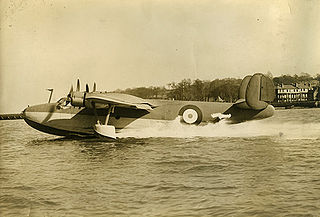
The Saunders Roe A.37 Shrimp was a 1930s British two-seat four-engined experimental flying boat built by Saunders-Roe Limited ("Saro") at Cowes.
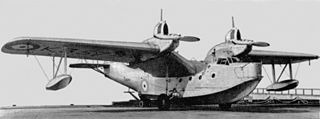
The Short R.24/31 was a British twin-engined, high-wing cantilever gull winged monoplane flying-boat designed and built by Short to Air Ministry specification R.24/31 for a "General Purpose Open Sea Patrol Flying Boat". The contract also specified the use of the experimental Rolls-Royce Goshawk engine. The Saunders-Roe London and the Supermarine Stranraer competed successfully for this contract.

The Saro A.21 Windhover was a British amphibious aircraft from the period between World War I and World War II, constructed by Saunders-Roe, or Saro. It was originally advertised as the A.19 Thermopylae after the famous clipper ship, being an enlarged version of the Saro Cutty Sark.
The English Electric M.3 Ayr was a British three-seat coastal patrol flying boat designed and built by the English Electric Company. The aircraft refused to become airborne and the project was abandoned.

The Saro Cloud was a British passenger amphibian flying boat designed and built by Saunders-Roe as the A.19. It was later produced as the A.29 for the Royal Air Force for pilot and navigator training.
The Saunders-Roe Duchess also known as the model P.131 was a British design for a large jet-powered flying boat envisaged by Saunders-Roe, based in Cowes on the Isle of Wight.
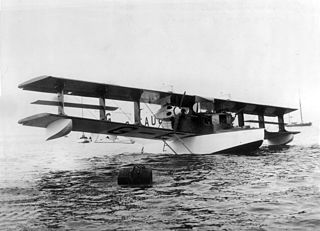
The Saunders Kittiwake was a British amphibian flying-boat built by S. E. Saunders at East Cowes, Isle of Wight. Only one was built, and it was scrapped after less than a year of testing.
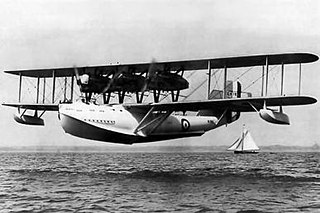
The Saunders A.3 Valkyrie was a large three-engined biplane flying boat with a wooden hull built to an Air Ministry specification. It was not found suitable for production and helped to confirm a preference for metal-hulled flying boats.

The Saunders A.14 was a test aircraft for Saunders' new metal hull construction method, being a Supermarine Southampton fitted with the Saunders' fuselage. The methods tested worked well enough to be used in SARO flying boat production from 1928 to 1938.
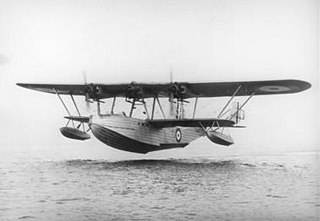
The Saunders Severn was a three-engined biplane flying boat intended for maritime patrol duties. It performed well but was fragile and unreliable. Only one was built.

The Douglas XP3D was a prototype American patrol flying boat of the 1930s. A twin-engined high-winged monoplane, the P3D was produced by the Douglas Aircraft Company to equip the US Navy's Patrol squadrons, but despite meeting the Navy's requirements, the rival Consolidated PBY was preferred owing to a lower price.
The Bréguet 790 Nautilus was a prototype French three-seat coastal patrol flying-boat designed and built by Bréguet Aviation to meet a requirement from the French navy.
The Macchi M.C.77 was a reconnaissance bomber flying boat built by Macchi in the thirties and remained at the prototype stage.
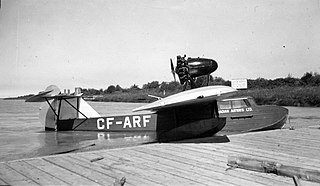
The Boeing-Canada A-213 Totem was a Canadian single-engine pusher monoplane flying boat intended for forestry and fisheries patrols as well as a light utility transport for the British Columbia coastline, where there are few flat places for runways, and waterways are plentiful. The sole example, CF-ARF, CB10 was designed and built by Boeing Aircraft of Canada. The name refers to the Totem poles used by the First Nations in British Columbia.